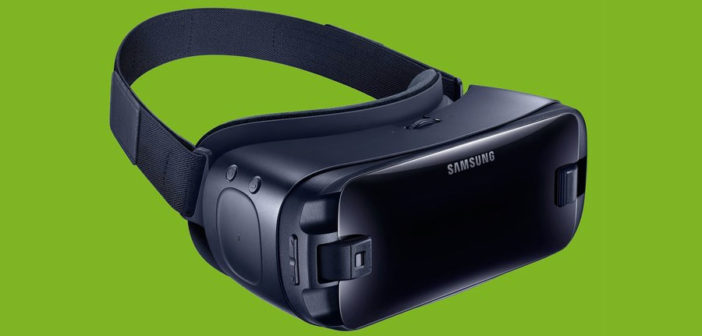IMAGINE, FOR A moment, that you’re inside a virtual reality world. You look to your left and an open door appears, beckoning you to walk through it. You enter and suddenly find yourself in the middle of an advertisement—a branded world you can explore and manipulate. Forget banner ads and auto-playing videos. The advertisement of the future is immersive, almost game like. And it’s nearly here.
Last week, Unity, the world’s largest VR development company, announced Virtual Room, a new type of interactive advertisement it plans to roll out later this year. Unlike the standalone VR marketing experiences you’ve seen before, Virtual Room ads will surface across a wide network of VR apps, similar to the display ads you see on your laptop or the video ads you see while playing games on your phone. Don’t act surprised—you knew this was coming.
Like any new medium, VR must be monetized, says Tony Parisi head of Unity’s VR and AR strategy. “Developers want to make money,” he says. “We want to help them do that.“ Until recently, though, it was unclear how, exactly, that would happen. Most VR developers make cash from micro transactions and in-app purchases, but that’s pennies compared to what advertising can bring in.

To capitalize on the opportunity, other VR companies have already begun exploring what ads might look like in this new medium. In a recent blog post, Google showed off a concept for a floating cube that players can tap or gaze at to start video advertisements—sort of like auto-play, but in VR. The format is simple by design. “VR ad formats should be easy for developers to implement, native to VR, flexible enough to customize, and useful and non-intrusive for users,” writes Aayush Upadhyay and Neel Rao of Google’s Area 120.
Google’s vision nods to the legacy of existing digital advertisements, which many in the ad industry are trying to avoid. “Our hope is that VR creates new opportunities that don’t replicate advertising the way that mobile originally did with repurposed 30-second TV spots,” says Eric John, deputy director of video at the Interactive Advertising Bureau, the organization responsible for setting guidelines for web, mobile, and now VR advertisements.
The IAB is working with Unity to build guidelines around Virtual Room, which outline everything from how long an ad should play to how often it should surface. For now, Unity says branded content will be opt in for both developers and players. It will surface for no more than two minutes every hour, and those ads will be highly targeted as to not alienate the person interacting with them. They’ll likely pop up at points of friction—when a player is having trouble or after a level is completed—similar to ads on mobile games and television.
What will change is how the player interacts with advertisements. People won’t passively watch Unity-created ads; they’ll play with them. “Ads are usually linear,” says Julie Shumaker, VP of business development at Unity. “And there’s nothing linear about VR.”
To play to the medium’s strengths, Virtual Rooms will first appear as a floating, glowing door somewhere in the player’s field of vision. Shumaker calls this the Alice in Wonderland effect. “If you choose to enter, you’re going to drop into a completely different experience than the one you were just in,” she says, adding that the experience is meant to be transportive, not jarring. From there, players can explore the branded world for anywhere from 30 seconds if they’re not interacting to 60 seconds or more if Unity’s tracking software detects deep engagement.
For its pilot advertisement, Unity partnered with Lionsgate to craft a Virtual Room for the gory movie Jigsaw that will surface in apps across Unity’s growing VR ad network. Though they haven’t finished the creative content, Shumaker says the goal is to build something that will hit people on a visceral level and engage them just like a VR game engages players.
That’s an appealing sell to advertisers. Creating compelling content that doesn’t feel like an advertisement is one way to avoid audience burnout. Still, developing high caliber content is prohibitively expensive. Shumaker says they haven’t finalized pricing yet, but Virtual Room is going to be a premium product that commands premium rates.
According to a recent report from Forrester, developing a single 360 video ad can cost in the tens of thousands; developing a fully interactive ad could cost upwards of $500,000. “I think a lot of brands will be reluctant to invest in that,” says Thomas Husson, one of the Forrester analysts who authored the report.
For advertisers, the cost might be too high for what’s still essentially an experiment. But Unity has reason to bet on it. There might not be many people using VR headsets today, but if Virtual Room becomes a de facto ad standard in what’s projected to be a growing field, Unity has a lot to gain. Plus, virtual reality offers advertisers one thing that no other medium can accomplish. “You have 100 percent of the audience’s attention,” Shumaker says. In today’s frenzied media landscape, that’s worth a lot.
–
This article first appeared in www.wired.com
Seeking to build and grow your brand using the force of consumer insight, strategic foresight, creative disruption and technology prowess? Talk to us at +9714 3867728 or mail: info@groupisd.com or visit www.groupisd.com




